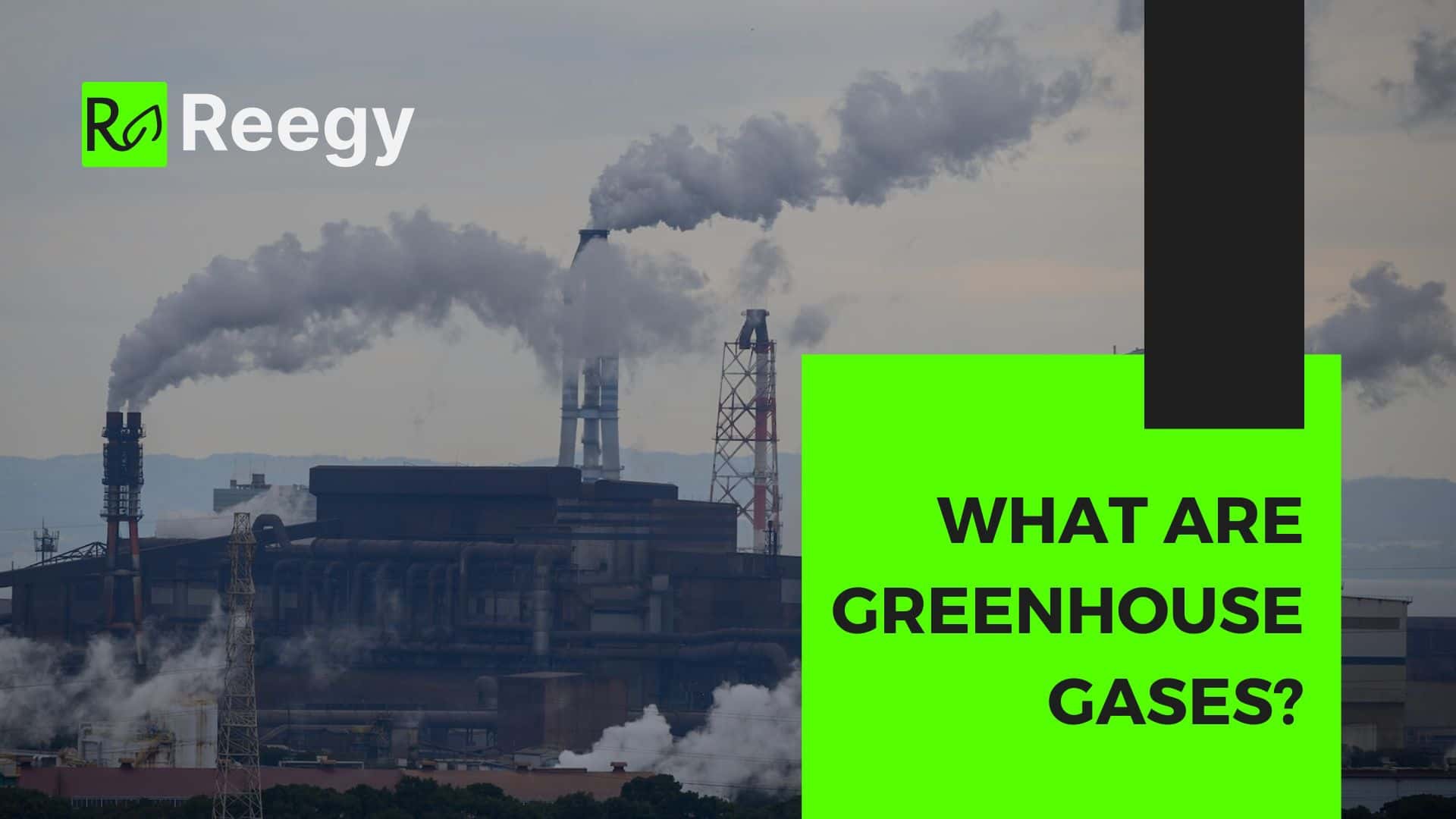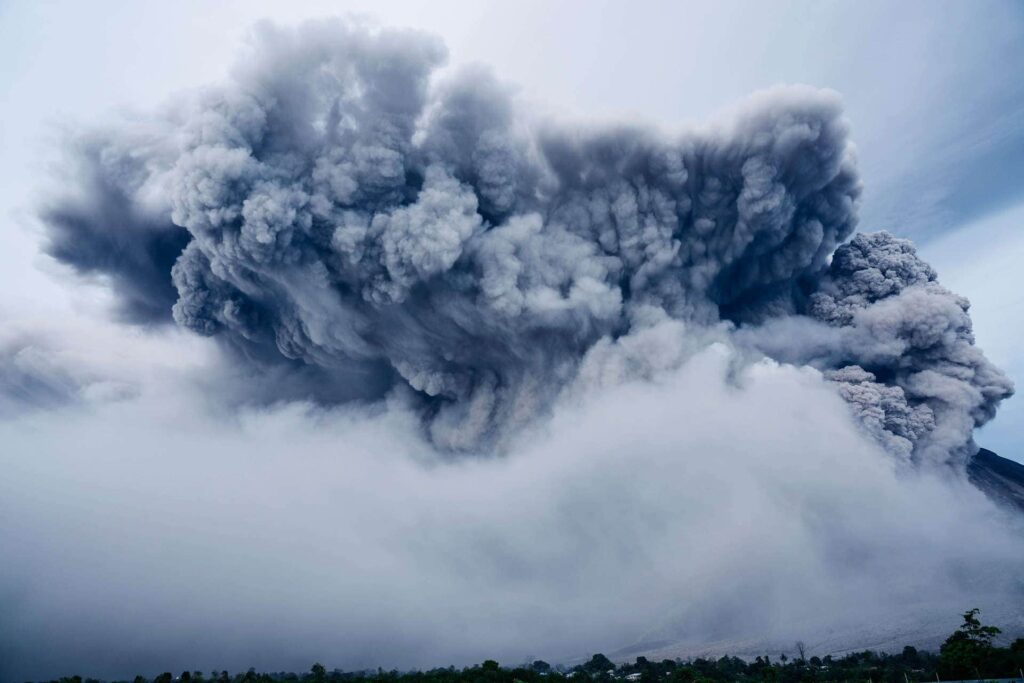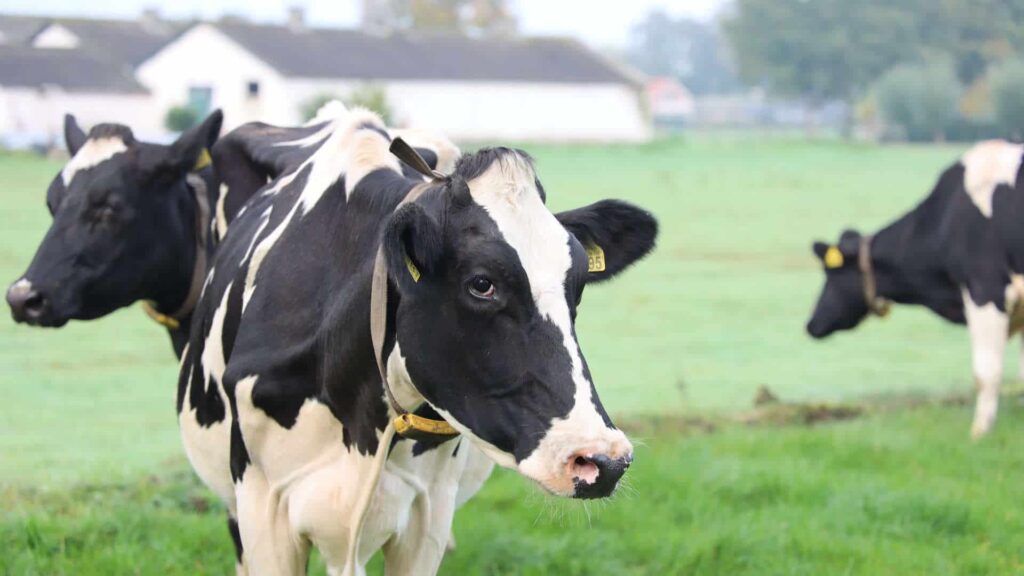
Scientists have shown that human-caused (anthropogenic) greenhouse gases like carbon are one of the primary causes of climate change and global warming.
However, while most people know about carbon dioxide and its effects on the climate, there are plenty of other greenhouse gases out there.
Today, we will shed light on what greenhouse gases are, how they come into our atmosphere, and why you should care.
Let’s get started!
What are Greenhouse Gases?
Greenhouse gases (GHG) trap heat from the sun in our planet’s atmosphere. Naturally, occurring concentrations ensure livable conditions on earth, while anthropogenic or human-caused GHGs from industrial and other activities are responsible for climate change, global warming, and ozone-layer depletion.
The most abundant greenhouse gases in our atmosphere are carbon dioxide, water vapor, nitrous oxide, methane, and fluorinated gases like perfluorocarbon.
They appear in different concentrations making up about 0.1% of our planet’s atmosphere.
Greenhouse gases are not dangerous per se and neither are their emissions. In fact, they have always naturally occurred in our atmosphere and have been emitted by numerous natural carbon sources.
Without greenhouse gases, the temperatures on earth would be far lower, making our planet much less liveable and arguably uninhabitable in many parts.

However, as with many things in life, too much of something (in this case emissions of greenhouse gases) can lead to negative effects.
Over-concentration of them leads to dangerous climate change effects and threatens life as we know it.
By calculating your carbon footprint, you can get a feel and understanding for the ecological impact you and your company have on our plane.
What Greenhouse Gases are there?
There are dozens of greenhouse gases (GHGs) in our atmosphere, however, most of them do not pose any significant climate or global warming risks. The most dangerous ones for our planet are carbon dioxide, methane, nitrous oxide, and fluorinated gases.
Although there are many different GHGs exist, only four of them are responsible for the majority of human-caused climate change.
These are:
Carbon dioxide (CO2)
Carbon dioxide is the most well-known greenhouse gas and scientist have named it the primary cause of global warming. Its biggest source of emissions is the burning of fossil fuels (like coal, oil, or natural gas). Ongoing deforestation and land-use changes, but also natural causes like volcanic eruptions also contribute to global carbon dioxide emissions.
Methane (CH4)
Methane has a much higher global warming potential (GWP) than carbon dioxide but appears much less in our atmosphere. It is released during operations, petroleum and oil systems, and fugitive emissions from leaks.
Nitrous Oxide (N2O)
Nitrous oxide is usually better known as “laughing gas” and has 300x more heating potential than carbon dioxide. The biggest source of nitrous oxide emissions is the agricultural sector. Yes, cows and our meat consumption are a big cause of global warming.

Fluorinated gases
Fluorinated gases like Hydrofluorocarbons (HFCs), perfluorocarbons (PFCs), and sulfur hexafluoride (SF6) are released in industrial processes and have very high GWPs. They are also the longest-lasting greenhouse gases in our atmosphere and are solely caused by humans. Refrigerators, air conditioners, and other machinery are its primary sources of emissions.
Greenhouse gases and global warming
Greenhouse gases hold an inherent global warming potential. Excess amounts of them in our atmosphere lead to climate change, global warming, and ozone depletion. Most of these effects are caused by human emissions.
Global warming is one of humanity’s biggest threats and most of it is caused by anthropogenic (human-made) GHG emissions from industrial activities.
The concentration of carbon in our atmosphere has risen from around 318 ppm (parts per million) in the early 1960s to 414.72 ppm in 2021. In comparison to pre-industrialization levels, our world has experienced an increase in atmospheric CO2 of more than 32%.
In the same time frame, our global temperatures have risen by more than 1°C, causing the melting of our polar ice caps, depletion of glaciers, and rising sea levels.
Scientists have found that if we are not able to keep global warming below 1.5°C in comparison to pre-industrial levels, our planet will be faced with uncontrollable climate-related dangers never seen before.
Policies tackling global greenhouse gas emissions
Several intergovernmental bodies have introduced policies and standards over the years to lead joint global climate action.
Kyoto Protocol
To tackle the threat of uncontrolled climate change, the United Nations Kyoto Protocol was adopted in 1997 which aims to introduce policies that limit anthropogenic greenhouse gas emissions.
The Greenhouse Gas Protocol was introduced to give organizations of any size a framework to disclose and account for their corporate GHG emissions.
The Paris Agreement
The Paris Agreement from 2016 aims at keeping the increase of global temperatures below 2°C (3.6°F) in comparison to pre-industrial levels. It also recognizes that limiting this increase to 1.5°C (2.7°F) would have substantial benefits and reduce climate change-caused damages to society.
The key lies in reaching Net Zero emissions by 2050 which is a goal many companies have committed to already.
In order to achieve this, scientists have estimated that global GHG emissions need to be reduced by around 50% by 2030.
While this is in our world’s best interest, we are lagging behind in reaching our climate targets. More companies and governments must commit to Net Zero in order to reach the ambitious 1.5°C climate target.
What are f-gases?
Fluorinated gases or f-gases are a subgroup of greenhouse gases mainly used in industrial processes. The 4 f-gases are Perfluorocarbons (PFCs), Hydrofluorocarbons (HFCs), Sulfur Hexafluoride (SF6), and nitrogen trifluoride (NF3). Due to their ozone-depleting effects, efforts are made to phase them out.
Synthetic fluorinated gases are highly potent for global warming. Sulfur hexafluoride, for example, is about 28,000 times more effective in trapping heat than carbon dioxide.
The biggest issue with fluorinated gases is that they are mostly emitted by small equipment pieces which often are not reported in companies’ annual GHG emission reports.
This includes refrigerators, air conditioning units, and small electronic devices through fugitive emissions.

A carbon accounting platform like Reegy can help you detect and reduce f-gas emissions in your production units and value chain. Our integrated sustainability platform shows you exactly how you can measure your GHG emissions and finds ways to reduce them.
List of other Greenhouse Gases
The following list includes the most relevant greenhouse gases (GHG), as identified by the Intergovernmental Panel on Climate Change (IPCC) in their last report. Some additional gases are included for completeness’ sake.
It excludes a few minor short-lived gases (mainly carbon monoxide) or others that are mostly not human-caused, such as argon.
| Name | Symbol | Global Warming Potential (100 years) | Primary Source of Emissions |
|---|---|---|---|
| Carbon Dioxide | CO2 | 1 | Burning of fossil fuels |
| Methane | CH4 | 27.9 | Process and fugitive emissions |
| Nitrous Oxide | N2O | 273 | Agriculture |
| Sulfur hexafluoride | SF6 | 22,800 | Electrical transmission and distribution equipment |
| Water Vapor | H2O | Neglible | Evaporation |
| Nitrogen Trifluoride | NF3 | 17,200 | Electronics manufacturing |
| Hexafluoroethane | C2F6 | 9,200 | Etchant in semiconductor manufacturing |
| Carbon tetrafluoride | CF4 | 6,630 | Refrigeration |
| CFC-11 (Trichlorofluoromethane) | CCl3F | 4,660 | Refrigeration |
| HFC-134a (Tetrafluoroethane) | C2H2F4 | 1,300 | Refrigeration |
| HFC-23 (Fluoroform) | HFC-23 | 14,800 | Etchant in semiconductor manufacturing |
Again we see that synthetic fluorinated gases used in refrigeration units and electrical components manufacturing have the highest global warming potential of all.
Reegy is a complete software solution for ESG & Carbon Footprint Management. Our Reegy Eco Hub enables enterprises, financial institutions and governmental organizations to manage their climate action in one central location along the entire value chain. Track, measure, reduce, and offset your carbon emissions, disclose them to regulators, stakeholders, and customers and lead your company to Net Zero on autopilot!